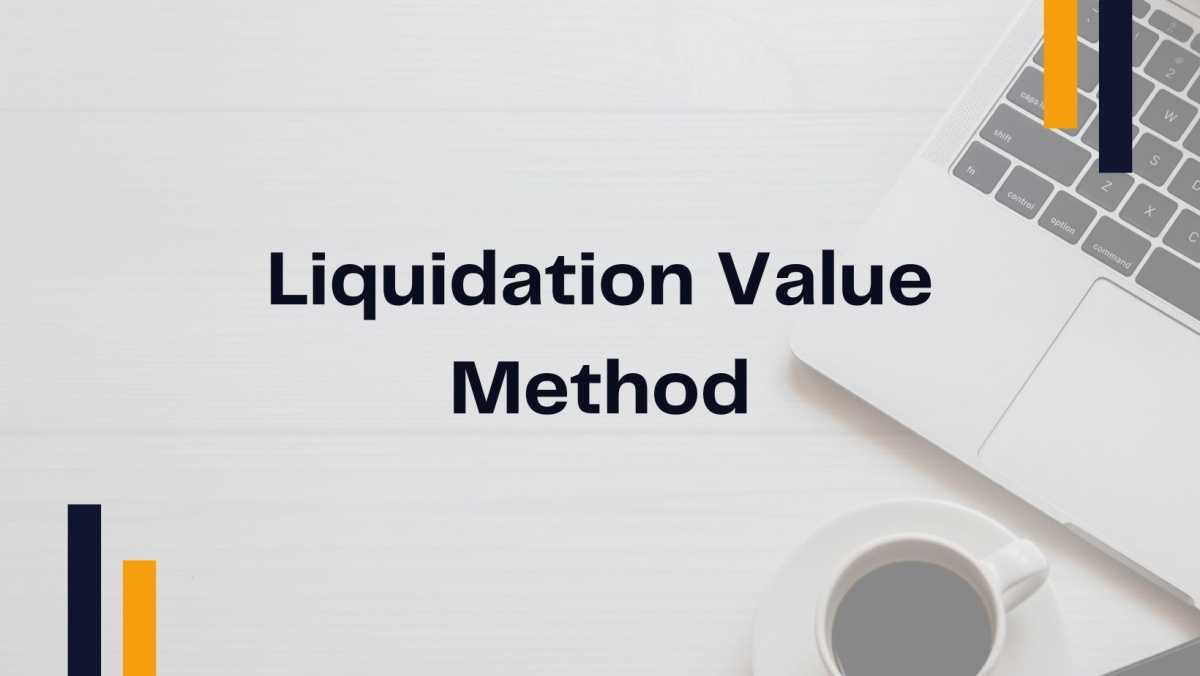The Liquidation Value Method is used to estimate the value of a company if it were to be liquidated, meaning all assets are sold, and liabilities are settled. It is commonly used in distress scenarios, bankruptcy proceedings, and conservative valuation approaches.
Step 1: Identify and Categorize Assets
List all the company’s assets based on the balance sheet. These typically include:
-
Current Assets
- Cash & Cash Equivalents
- Accounts Receivable (adjusted for doubtful debts)
- Inventory (adjusted for obsolescence)
-
Fixed Assets (Property, Plant, Equipment - PPE)
- Machinery & Equipment
- Land & Buildings
- Vehicles
-
Intangible Assets (if applicable)
- Patents, trademarks, and brand value (these are often excluded in a strict liquidation scenario unless they can be sold)
-
Other Assets
- Investments in subsidiaries
- Long-term deposits
Step 2: Determine Realizable Value of Assets
Each asset class must be adjusted to reflect liquidation value, which is usually lower than book value. There are three common valuation approaches:
-
Forced Liquidation Value (FLV)
- Assets are sold in a short period (distressed sale).
- Typically results in low recovery values (e.g., 20-50% of book value for inventory).
-
Orderly Liquidation Value (OLV)
- Assets are sold over time to maximize proceeds.
- Recovery rates are higher than FLV (e.g., 70-90% for fixed assets).
-
Fair Market Value (FMV)
- Used if the company is not in distress but is considering asset disposal at market rates.
Example Adjustments
| Asset Type | Book Value | Recovery Rate (%) | Liquidation Value |
|---|---|---|---|
| Cash & Equivalents | $5M | 100% | $5M |
| Accounts Receivable | $10M | 80% | $8M |
| Inventory | $15M | 50% | $7.5M |
| Machinery & Equipment | $20M | 70% | $14M |
| Land & Buildings | $30M | 90% | $27M |
Step 3: Identify and Subtract Liabilities
List all outstanding obligations, including:
-
Current Liabilities
- Accounts Payable
- Short-term debt
- Accrued expenses
-
Long-term Liabilities
- Bank loans and bonds
- Lease obligations
- Employee severance liabilities
-
Contingent Liabilities (if applicable)
- Legal claims
- Environmental cleanup costs
Example Calculation
| Liability Type | Amount |
|---|---|
| Accounts Payable | $8M |
| Short-term Loans | $12M |
| Long-term Debt | $25M |
| Other Liabilities | $5M |
| Total Liabilities | $50M |
Step 4: Calculate Net Liquidation Value
Net Liquidation Value=Total Liquidation Value of Assets−Total Liabilities\text{Net Liquidation Value} = \text{Total Liquidation Value of Assets} - \text{Total Liabilities}
Example Calculation
- Total Liquidation Value of Assets = $61.5M
- Total Liabilities = $50M
- Net Liquidation Value = $61.5M - $50M = $11.5M
Step 5: Interpret the Results
- If Net Liquidation Value is positive → Investors, creditors, and shareholders may recover part of their investment.
- If Net Liquidation Value is negative → Creditors may not be fully repaid, and shareholders may receive nothing.
Step 6: Sensitivity Analysis (Optional)
- Test different recovery rate assumptions (conservative vs. optimistic).
- Analyze contingent liabilities and legal risks that could affect liquidation value.


